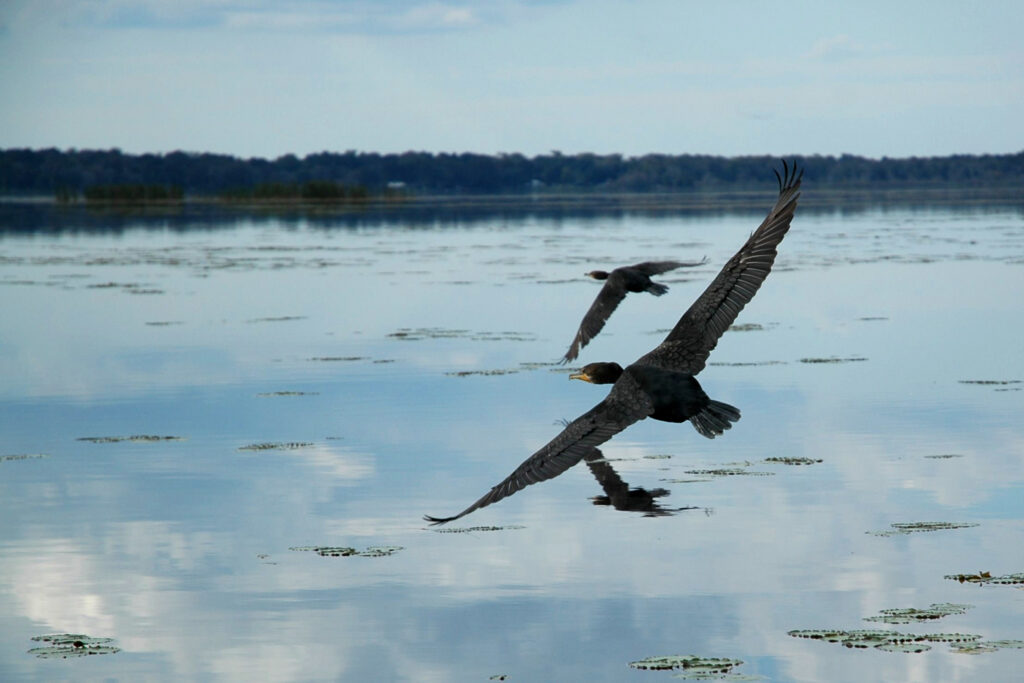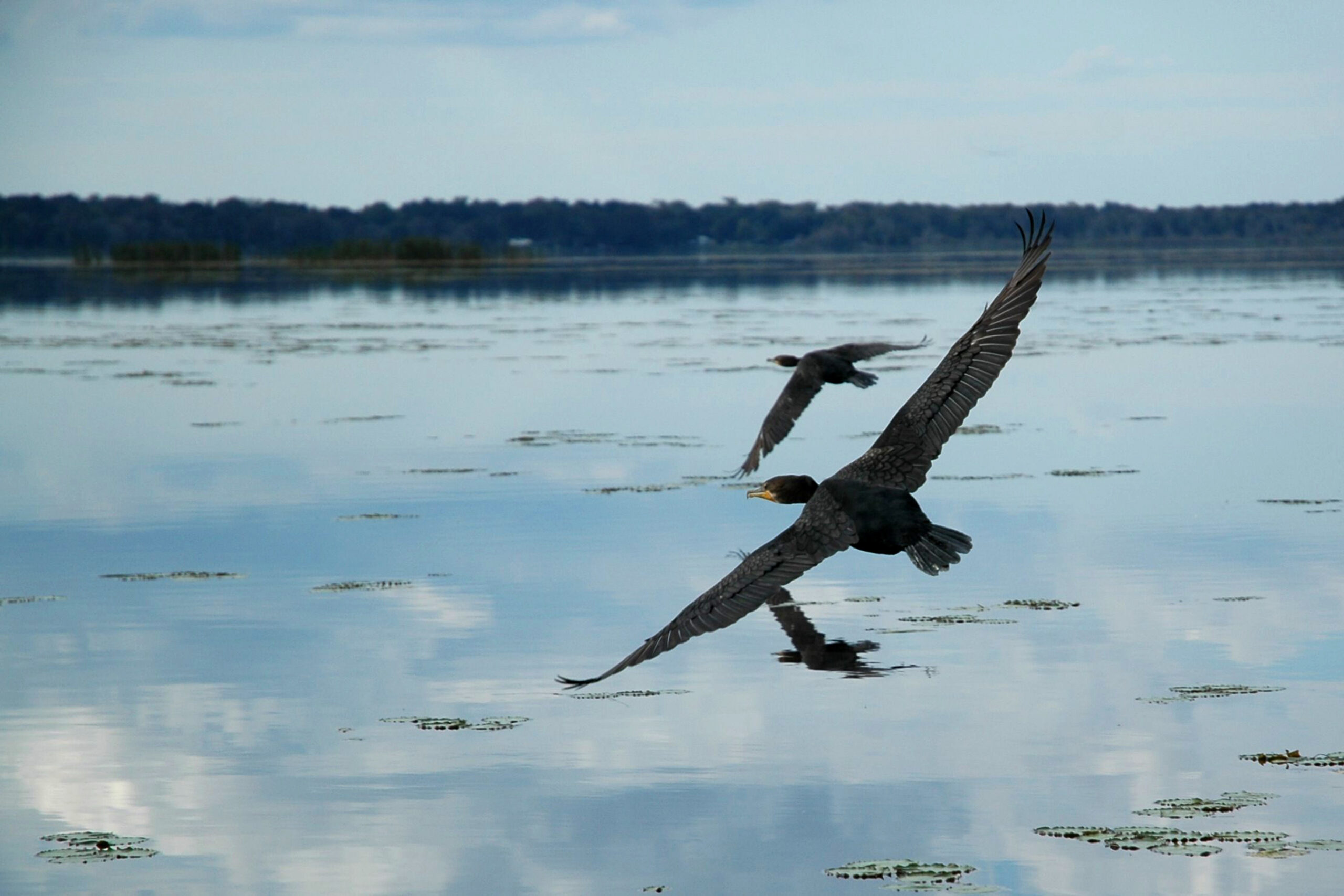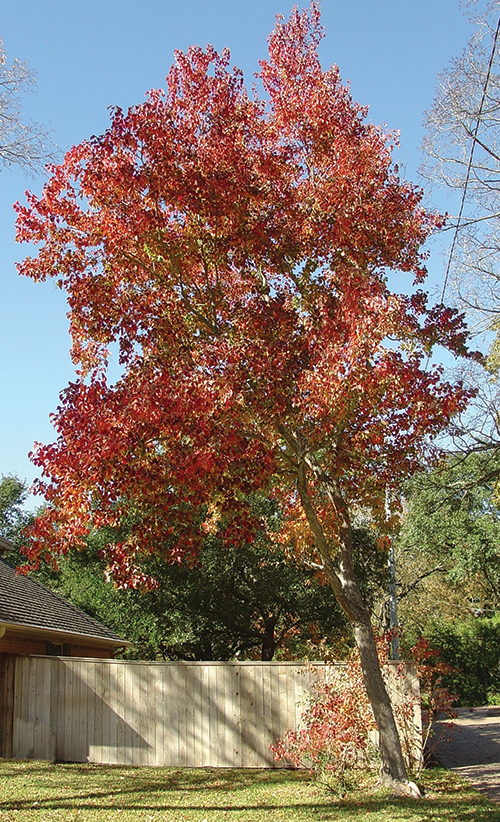By John Felsher
In recent decades, populations of federally protected cormorants exploded across North America. Because these big black fowl eat so many fish, and smell like it, many anglers detest these birds. However, some catfish anglers have learned to love the foul fowl.
Double-crested cormorants can measure 29 to 36 inches long with wings spanning up to 52 inches. Each winter, flocks of cormorants head south, just like waterfowl and other bird species. Many remain in Alabama all year long, but others head back north in the spring.
In the fall and winter, anglers commonly see huge flocks of cormorants floating on the surface of many lakes. Cormorant concentrations could indicate good numbers of fish in an area. The big black birds primarily eat fish, but they also eat amphibians, crustaceans and other things. They can dive down 25 feet and remain underwater for more than a minute.
Cormorants love shad most of all, as do many other fish, like bass, crappie and catfish. After filling their bellies with fish, cormorants perch on tree branches. They must stretch out their wings to dry their feathers in the sun before diving for fish again. While sitting in the trees resting and digesting, the shad-stuffed birds inevitably relieve themselves. Waste deposits can stain tree trunks, branches and foliage white, but some of it drops into the water.

What sounds gross to humans rings the dinner bell for catfish. With sensors covering its entire body, a catfish swims through the water like a giant tongue tasting everything. With thousands of taste buds per square centimeter in its skin and even more densely packed sensors in its whiskers, catfish can detect minute food particles or scents over long distances. When the malodorous “deposits” hit the water, catfish smell it from a long way off and come looking for an easy fishy meal.
Cypress trees line the shorelines of many Alabama lakes and rivers. In reservoirs, many cypress trees grow well away from the shorelines. A cypress tree can grow in water up to about seven feet deep. As long as the birds stay in the trees, catfish will hover under them waiting for their next meal.
First look for resting cormorants. Whenever possible, find birds that have been sitting in trees for a while. Failing that, look for trees freshly stained white with waste in or near water about three to seven feet deep. Also look for any activity around the tree trunks that could indicate feeding fish.
Normally, birds fly off as boats approach. After chasing away the birds, attach a live or whole fresh shad to a hook with no weight. If necessary for fishing current or in windy conditions, use a small jighead or split-shot to get the bait down to the bottom. Use as little weight as necessary.
Flip the shad close to the tree trunks. Let the baitfish flutter down naturally into the water. Usually, a catfish slurps the bait instantly, or not at all. With hungry catfish around, the bait will never hit bottom before a catfish grabs it. If a bait does hit bottom, let it rest a few seconds. Then, pop it up to the surface. Move it a foot or two and let it flutter down again.
Whenever possible, fish completely around trees growing in deeper water. Catfish might prefer one side or the other. Some trees could produce several good catfish in minutes, so keep fishing a spot as long as fish keep biting. After a few minutes with no action, move to another tree. Don’t waste time fishing unproductive trees.
For this kind of fishing, anglers don’t need to head out before dawn. Let the birds enjoy their breakfast. In mid-morning, birds stuffed with fish get sleepy and look for a place to take a nap in the sun. Sunshine helps the fishing because catfish can see the bait better when sunlight filters through the water. In addition, on a frosty day, sunshine hitting the water surface warms it a few degrees. Just one or two degrees warmer could make cold-blooded catfish more active.
Any reservoirs with abundant dead trees still standing in deep water could make great places to catch catfish. Cypress trees growing out from shorelines also attract birds. Also look for fallen trees with branches sticking out over the water.
Anyone could try flipping the trees for catfish. This fishing method makes a great way to teach children how to fish.
John N. Felsher is a professional freelance writer who lives in Semmes, Ala. He also hosts an outdoors tips show for WAVH FM Talk 106.5 radio station in Mobile, Ala. Contact him at [email protected] or through Facebook.




